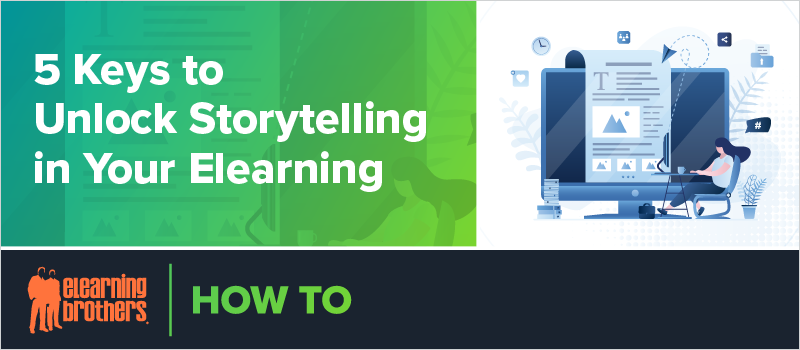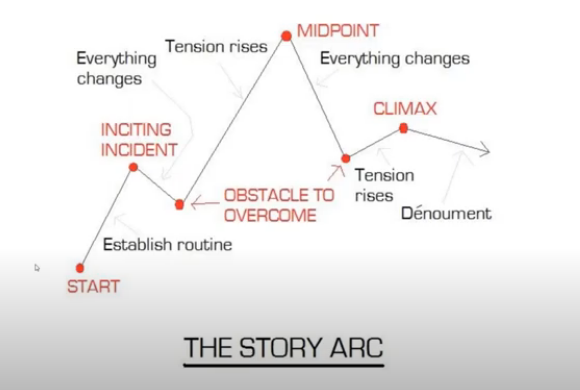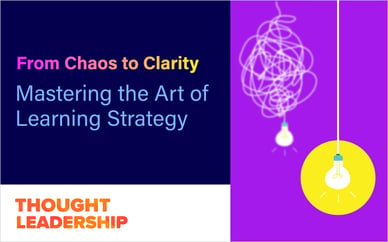
You already know that adding stories to your eLearning can make it more engaging, but what makes a good story? Storytelling is a universally loved art, and there are some time-tested techniques guaranteed to get your audience's attention and leave a lasting impression.
In this webinar, Andrew Townsend, Campaign Marketing Manager, shared 5 ways you can unlock the magic of storytelling in your eLearning development to increase learner engagement and retention.
He demonstrated these techniques with examples from beloved movies like Star Wars, Rocky, and Lord of the Rings.
5 Ways to Unlock Storytelling in Your eLearning
- Don’t let storytelling become an afterthought
- Tell a good story
- Plan for failure
- Don’t let the tension go early
- Think about what sticks to you
So how do you tell a good story? Follow the story arc, a structure used in many classic “hero’s journey” tales like Star Wars and others.

As seen in the above graphic, a good, engaging story typically contains an inciting incident, obstacles to overcome during which the tension rises, a midpoint, and a climax.
In the webinar, Andrew walked attendees through the story arc, using the original Star Wars: A New Hope as an example.
How does this apply to eLearning?
In eLearning, your learner is the hero of the story, and you are taking them on this journey.
Award-winning futurist, author and educator David Thornburg identifies three archetypal learning spaces— the campfire, cave, and watering hole—that can be used to facilitate learning. Storytelling has a place in many of these learning spaces.
Campfire
The campfire is a space where people gather to learn from an expert. In the days of yore, wise elders passed down insights through storytelling, and in doing so replicated culture for the next generation.
Cave
The cave is a private space where an individual can think, reflect, and transform learning from external knowledge to internal belief.
Watering Hole
The watering hole is an informal space where peers can share information and discoveries, acting as both learner and teacher simultaneously.
A couple of additions have been made since he originally identified the 3 learning spaces.
Life
A place that encourages immersive student-centered hands-on real-world learning experiences where students can apply what they have learned and create meaning.
Mountaintop
A place where one person or a small group communicates towards the rest of the world, showing what they can do with what has been learned.
Watch the webinar recording now to hear more tips on telling a good story and creating engaging eLearning.
Want our custom eLearning development team to help you create a good story in your next eLearning project?








